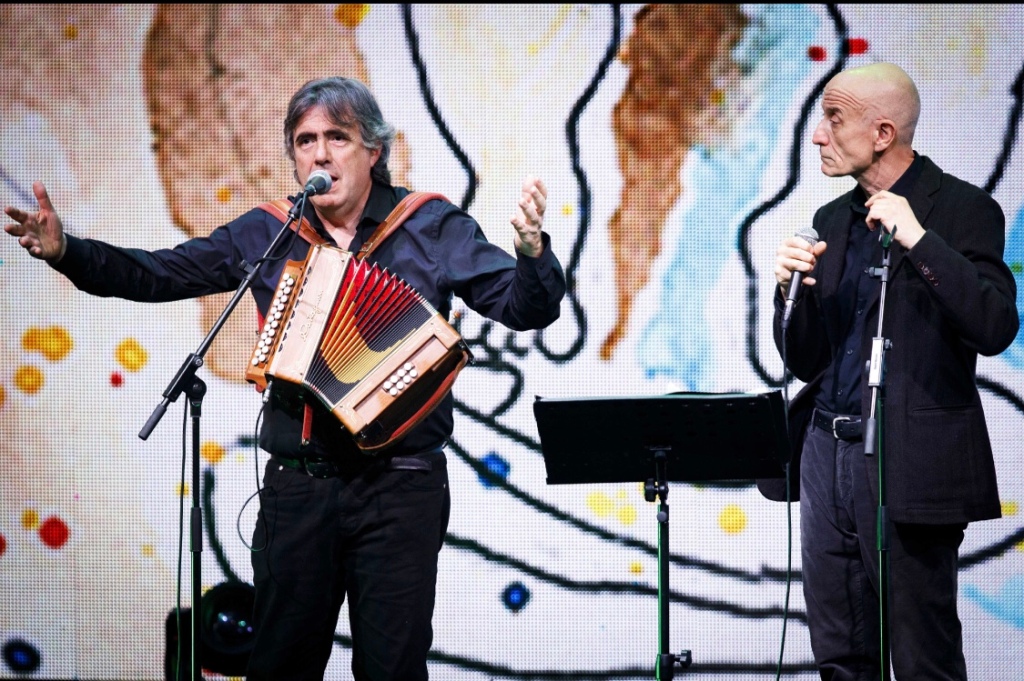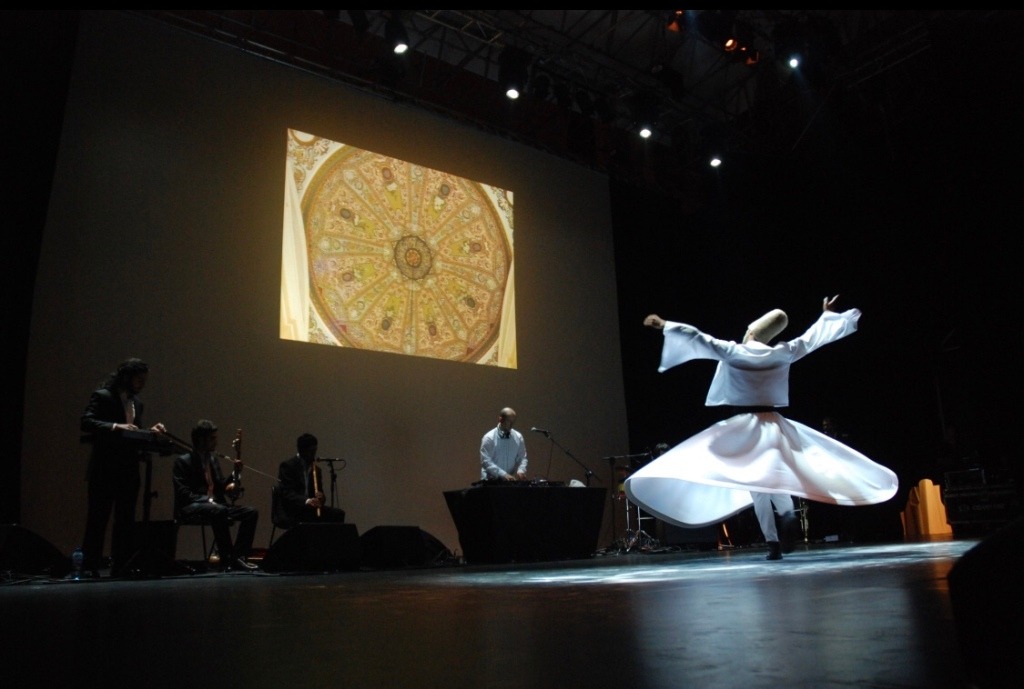It started yesterday (with Riccardo Ascani in Locura de Guitarras) the third edition of MIRABILIA of MUSIC – Music opens the Museums. The concert series inside the State Museums of the city of Rome it is an emotional journey between art and music to propose and create new and prestigious identities in the museums of the capital and restore them to a new look through baroque sounds, jazz and modern experiments.
The exhibition is commissioned by the Director of the State Museums of the city of Rome and the National Museum of Castel Sant’Angelo and Passetto di Borgo, Mariastella Margozzi, together with Maria Giuseppina Di Monte, Adriana Capriotti, Sonia Martone, Gabriella Musto, Matilde Amaturo, respectively Directors of: Hendrik C. Andersen Museum, Spada Gallery, National Museum of Musical Instruments, Basilica of Santa Maria ad Martyres – Pantheon, Boncompagni Ludovisi Museum. The review takes place in six of the eight museums belonging to the Directorate of State Museums of the city of Rome.
Mirabilia of Music is curated and organized by Anna Selvi of the State Museums Directorate of the city of Rome.

The ENSEMBLE LA PELLEGRINA with “MONTEVERDI AND THE ITALIAN 17th century”, will be the protagonist on 6 December (4.30 pm) at the Galleria Spada. Minni Diodati (soprano), Marco Ottone (viola da gamba) and Stefano Todarello (theorbo and baroque guitar) will propose century. In an intricate yoke of different styles, mirroring the profound changes that affected civil life in this historical period, seventeenth-century musicians approached a new musical sensibility, finding a different place in society by broadening the contrapuntal and modal horizon inherited from the sixteenth century to search for other expressive tonal values that would influence Western cultured music for a long time in the following centuries. It is with the birth of melodrama, of the sonata and the elaboration of vocal and solo genres with the accompaniment of the basso continuo that it was possible to realize that new “affective” ideal through which music was configured as an instrument of intensification of passions in the rhetoric of the written text. The La Pellegrina ensemble has chosen to select solo or multi-part instrumental pieces by some of the most important Italian composers of the first half of the 1600s. (Extraordinary opening of the Spada Gallery, reservations required on 06.6832409 – except on Tuesdays – or at the email address: palazzospada@gebart.it. Ticket cost 5 euro + 1 euro for booking; free and/or concessions as per law. Access for the concert, from Vicolo del Polverone 15 starting at 4.15 pm).
On December 7 (18.00) at the National Museum of Musical Instruments, it will be the turn of URNA CHAHAR – TUGCHI – voice, yangquin. They have defined it as the magical voice of Mongolia because Urna Chahar-Tugchi’s voice, with its four octaves of range, its richness of timbre and its domination of dynamics and registers, suggests a small orchestra. Born into a family of nomadic herdsmen in Inner Mongolia, i.e. in the Mongolian autonomous region located in China, Urna inherited the songs from the mothers and grandmothers of the community and studied the yangquin, a Chinese percussion chordophone originating from the ancient psaltery brought to China by missionaries. For thirty years she has been traveling the world with her portable Mongolia made up of traditional songs and daring improvisations. And every time, said the Frankfurter music critic
Allgemeine Zeitung, “in his music you can hear the vastness of the steppe, the whistling wind, the intrepid resistance of the stones, the scorching heat of the sun, the roar of the streams and the soft flutter of butterflies”. On the other hand, the inextricable links between humans, animals and nature postulated by Buddhism, the great religious sensitivity for the environment, the sacredness of the living in all its forms, influence Urna’s music so much that in his personal geography, in the maps leaflets of Ordos and Ulan Bator, they seem to have drawn the plans of the whole world. (admission allowed subject to availability)
On 13 December (12.00) appointment at the National Museum of Castel Sant’Angelo with MERCAN DEDE in “SECRET TRIBE”: a mystical journey enriched by the presence of a dervish dancer, Seyit Sercan Çelik. Among the physically active forms of meditation and contemplation, the most radical and at the same time the most spectacular is the “sam” ceremony practiced by the whirling dervishes of the Sufi brotherhood. A mystical and highly symbolic ceremony of abandonment and devotion. Ritual dance, whirling and prayer, samāsi is based on attentive listening to the subtle sounds of the hidden world and the infinite cosmos. Since ancient times, in fact, music has accompanied both the birth of the subject and its loss, the inner landscape and the transcendent, our small lives and the immeasurable that dominates us. Ancient techniques such as ecstasy and trance are still favored today by special music, hypnotic melodies and electronic beats that bear the evident signs of spirituality, or at least of its tending towards it. The undisputed specialist of these subtle sounds is Mercan Dede. His real name is Arkin Allen. He was born in Turkey, studied music in Istanbul, lives in Montreal and brings his musical vision to the world, a unique fusion between electronics and primordial instruments, modernity and tradition, Western thought and Sufi philosophy. Each of his concerts is a meditative adventure, an ecstatic journey, a gateway to the contemplation of the splendor of the human and the divine. The concert will also be streamed in the Sala Paolina (admission is allowed subject to availability)
AMBROGIO SPARAGNA and PEPPE SERVILLO will instead be the protagonists of the concert “STOP THE SKY” – The spiritual songs of Sant’Alfonso Maria de’ Liguori, which will be held on 14 December (5.00 pm) at the Basilica of Santa Maria ad Martyres – Pantheon. Around the middle of the eighteenth century Alfonso Maria de’ Liguori, founder of the order of the Redemptorist Fathers, began to accompany his pastoral work among the poor of the Kingdom of Naples with the practice of some spiritual songs composed both in dialect and in Italian. These were songs with a simple structure, which drew melodic inspiration from popular themes, with which the missionary taught the “lazarians” the foundations of Catholicism, making them protagonists of liturgical rituals through the creation of special prayer groups (evening chapels). Many songs were linked to the cycle of the Christmas festivities and among these the very famous “Tu scendi dalle stelle”, “Quante nascette Ninno”, “Fermarono i cielo”, others to Marian devotion. In short, this repertoire spread throughout the Kingdom becoming the protagonist of the many rituals of the liturgical cycle, especially the Christmas and Marian ones. The success of these spiritual songs favored the development in the popular sphere of a very large repertoire of religious folk songs which are still widely used throughout the national territory. The show Fermarono i Cieli proposes some of these popular religious songs and others specially composed by Ambrogio Sparagna entrusting them to the very original interpretation of Peppe Servillo and a group of popular instruments including a giant bagpipe, a model of extraordinary proportions (it is almost two meters) that spread throughout the kingdom of Naples from the end of the eighteenth century precisely for the purpose of accompanying the typical repertoire of spiritual songs. (admission allowed subject to availability)
Closing on 16 December (4.30 pm) at the Boncompagni Ludovisi Museum with the TRABACE BROTHERS who present live “SBARCO”: a show of original music that manages to combine their classical matrix with contemporary improvisation. Angelo Trabace’s piano and Alessandro’s violin arrive together in a sonorous and dreamlike landscape of electrified chamber music through an open work out of time. An open work, an intimate exploration that arrives in a present time, suspended, apparently immobile but capable of setting new opportunities in motion; his sound narration tries to combine his folkloric cultural matrix, popular with minimalist contemporary research, new folk, author pop, classical training with improvisation and the music of the great Italian cinema, the cracks of the South and the mists of the North. An imaginary and dreamlike “Landing” capable of bringing together Debussy and Cipriani, Glass and Carpi, a long-awaited debut that takes the form of the soundtrack of a shared personal film by the Trabace brothers.
Official press release
Mirabilia of Music: all the complete program. There is also Peppe Servillo

